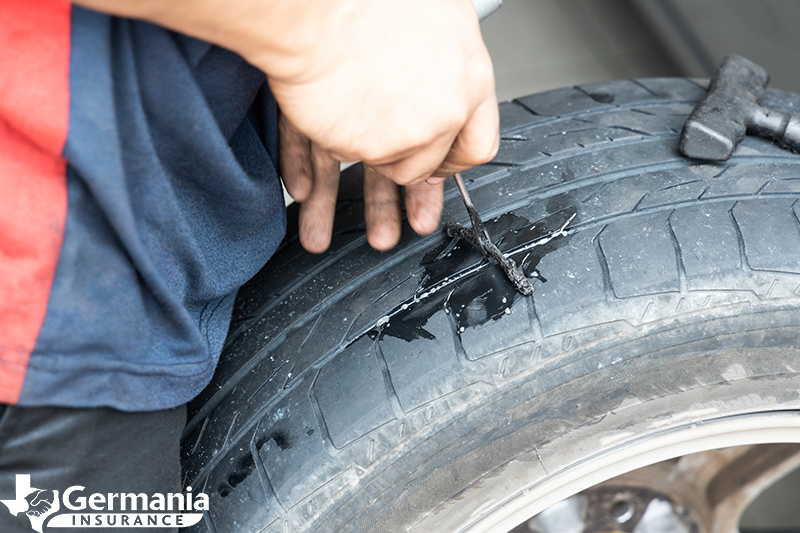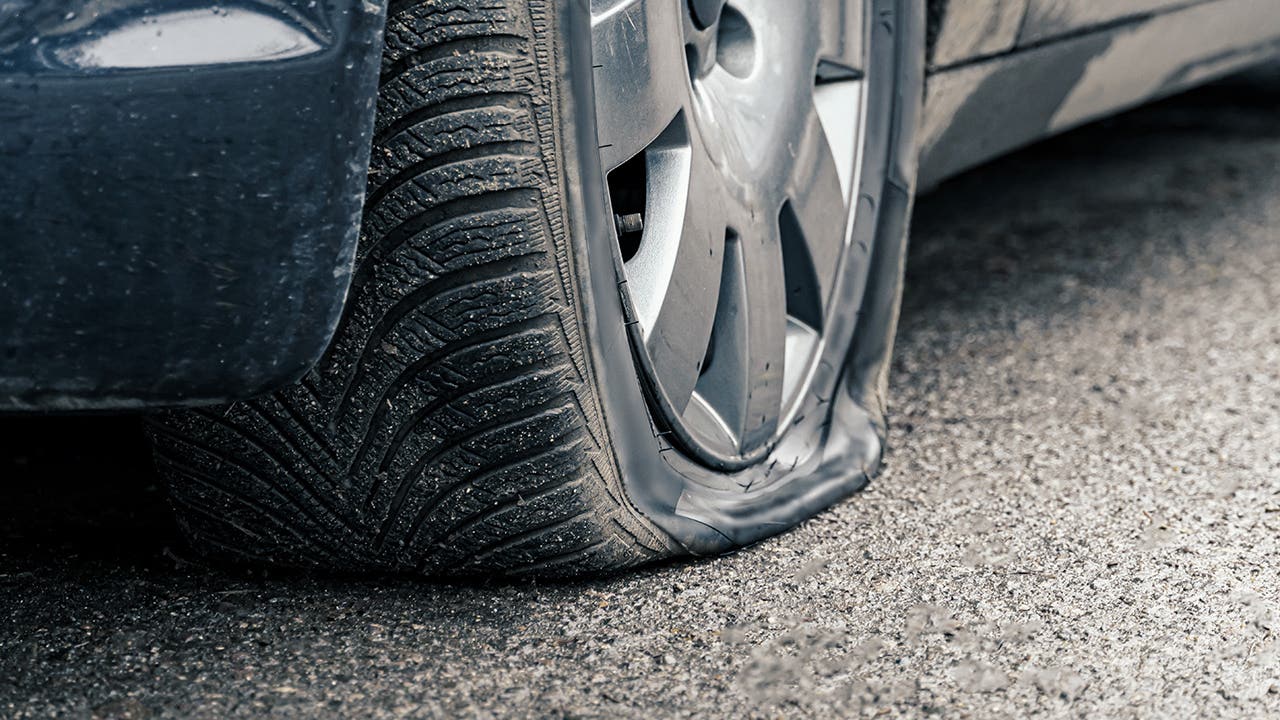How to Flatten a Tire
To flatten a tire, puncture it using a sharp object and release the air slowly. Flattening a tire intentionally should be done responsibly and legally, following proper disposal processes to prevent harm to the environment.
Whether replacing a tire or practicing emergency preparedness, knowing how to flatten a tire can be a valuable skill. This article will discuss the necessary steps to flatten a tire safely and effectively while highlighting the importance of proper tire maintenance and disposal techniques.
Understanding the process of flattening a tire can help individuals handle unexpected situations and emergencies with confidence. By following the guidelines outlined in this guide, you can learn how to flatten a tire responsibly and make informed decisions when dealing with flat tires.

Credit: www.vikingmotors.ca
1. Safety Precautions
When it comes to flattening a tire, safety precautions should always be a top priority. Before you begin, take note of the following measures to ensure a secure and worry-free experience.
1.1 Wear Protective Gloves
Protective gloves are a crucial aspect of ensuring safety. They shield your hands from sharp objects or potential hazards that may be encountered during the tire flattening process.
1.2 Park The Vehicle In A Safe Location
Parking the vehicle in a secure and accessible area is essential to prioritize safety. This helps minimize the risk of accidents and ensures a clear working space for the tire flattening procedure.
2. Gather The Necessary Tools
When it comes to flattening a tire, the first step is to gather the necessary tools. These tools are essential for the process and can help make the job easier and more efficient.
2.1 Tire Puncturing Tool
One important tool to have is the tire puncturing tool, which is used to create a hole in the tire. This tool is crucial for flatting the tire effectively.
2.2 Valve Core Removal Tool
Another essential tool is the valve core removal tool. This tool allows you to remove the valve core, which is necessary to release the air from the tire.
2.3 Tire Pressure Gauge
Lastly, ensure you have a tire pressure gauge handy. This tool helps you monitor the air pressure in the tire and ensure it is at the desired level for flattening.
3. Locate The Valve Stem
When it comes to flattening a tire, locating the valve stem is crucial. The valve stem is where you can release the air pressure from the tire. Here are the steps to help you locate the valve stem:
3.1 Identifying The Valve Stem
An easy way to identify the valve stem is by looking for a small cylindrical metal or rubber part that sticks out from the rim of the wheel.
3.2 Clearing Any Obstructions Around The Stem
- Remove any valve stem caps that may be covering the valve stem.
- Inspect the area around the valve stem for any dirt, debris, or objects that may obstruct access to it.

Credit: germaniainsurance.com
4. Deflate The Tire
4. Deflate the Tire
4.1 Removing The Valve Core
First, locate the valve stem on the tire and remove the valve cap. Then, use a valve core removal tool to unscrew the valve core from the stem.
4.2 Checking The Tire Pressure
Using a tire pressure gauge, check the current pressure in the tire to ensure it is at the desired level for deflation.
4.3 Reinstalling The Valve Core
Once the desired pressure is achieved, reinstall the valve core by using the valve core tool to tighten it securely in the valve stem.
5. Verify The Flat Tire
To verify a flat tire, visually inspect the tire for any signs of damage, such as punctures or tears. Additionally, check the tire pressure using a pressure gauge to ensure it is significantly lower than the recommended PSI.
Once you suspect that you have a flat tire, it’s crucial to confirm the issue before taking any further steps. By verifying the flat tire, you can ensure that you are addressing the correct problem and avoid wasting time and effort on unnecessary repairs.
5.1 Examining The Tire For Flatness
The first step in verifying a flat tire is to visually examine it for any signs of deflation. Here’s how you can examine the tire for flatness:
- Inspect the tire tread: Look closely at the tire tread and check for any irregularities such as bulges, cuts, or punctures. These are clear indications of a flat tire.
- Observe the tire appearance: A flat tire may appear visibly lower compared to the other tires. If you notice a significant difference in height, it’s a good indication that the tire is indeed flat.
- Check for drooping sides: Gently run your hands along the sidewalls of the tire. If you feel any unusual softness or notice the sides drooping excessively, it’s a strong indication that the tire has lost air pressure.
5.2 Confirming The Tire Is Fully Deflated
After visually examining the tire and suspecting a flat, it’s important to confirm that the tire is completely deflated. Follow these steps to ensure the tire is fully flat:
- Check the tire pressure: Use a tire pressure gauge to measure the air pressure in the suspected flat tire. A significantly lower reading compared to the recommended pressure indicates a flat tire.
- Listen for hissing sounds: Stand close to the tire and listen carefully for any hissing or escaping air sounds. This can confirm that the tire is deflated and may have a puncture.
- Press the tire firmly: Use your hand or foot to gently press down on the middle of the tire. If it feels flat, without any resistance or firmness, it further confirms that the tire is fully deflated.

Credit: www.bankrate.com
Frequently Asked Questions On How To Flatten A Tire
How Do You Deflate A Tire Quickly?
To deflate a tire quickly, remove the valve cap and press the valve stem with a small tool or the back of a pen. Be cautious as air will release rapidly. Monitor the pressure until it reaches the desired level.
What Can Make A Tire Go Flat?
Common causes of flat tires include punctures from sharp objects, improper tire maintenance, wear and tear, and valve stem issues.
How Long Does A Slashed Tire Take To Deflate?
A slashed tire can deflate within minutes to hours, depending on the size of the slash.
How Long Does It Take A Tire To Go Flat From A Nail?
A nail can cause a tire to go flat within a few minutes to a few hours. The size and placement of the nail affect the speed of deflation.
How Do You Flatten A Tire Without Damaging It?
To flatten a tire without causing damage, you can use a tire deflation device or seek professional help.
What Are The Dangers Of Driving With A Flat Tire?
Driving with a flat tire can lead to increased risk of accidents, vehicle damage, and compromised handling and control.
Can I Use Household Items To Flatten A Tire?
Using household items like nails or sharp objects to flatten a tire is not recommended as it can cause permanent damage.
Conclusion
Knowing how to flatten a tire is an essential skill for any driver. By following the steps outlined in this guide, you’ll be well-prepared to handle a flat tire situation with confidence and ease. Don’t forget to regularly check your tire pressure and tread for a smooth and safe drive.


